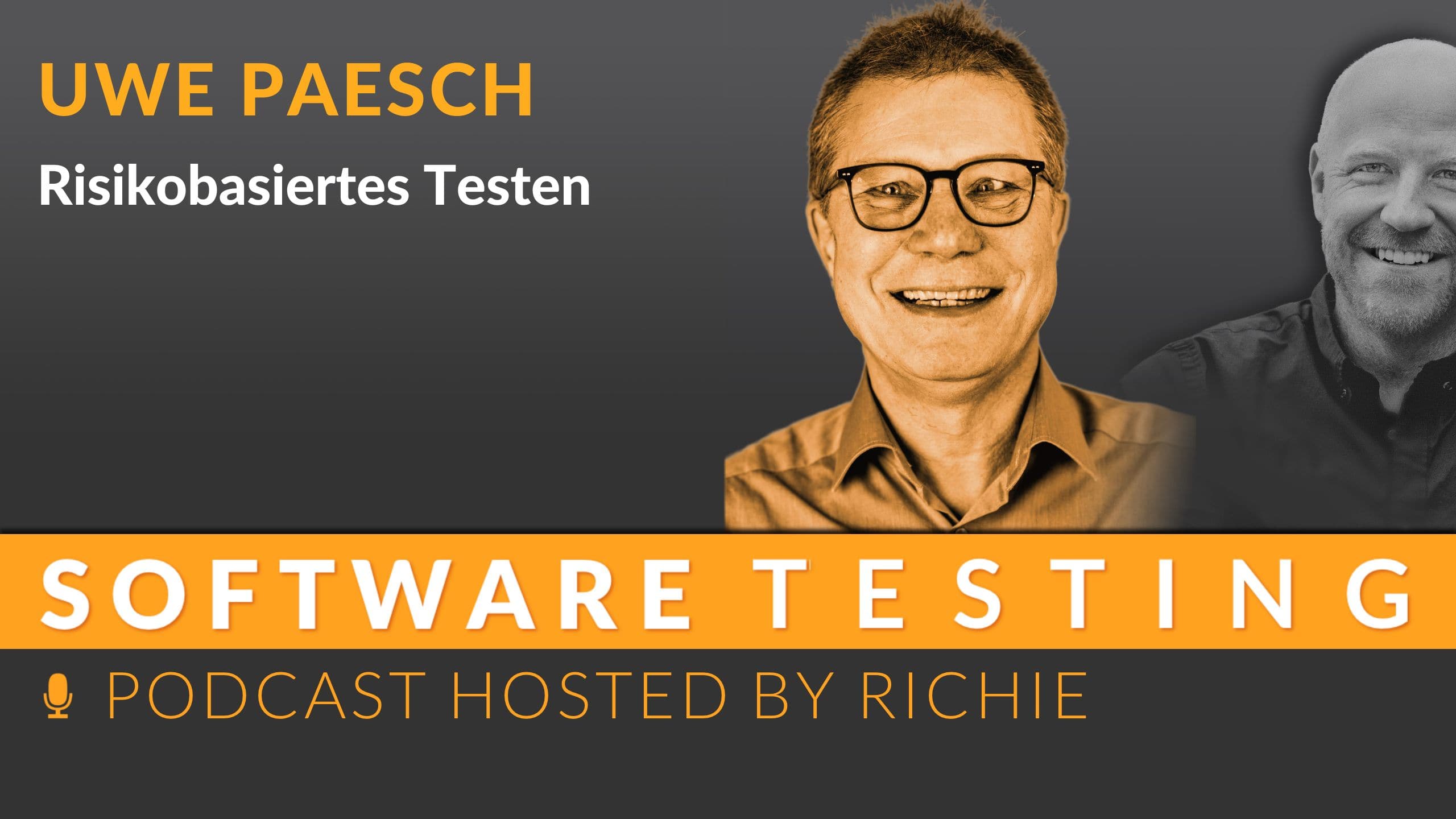Test Levels or Test Stages
Test levels are a very practical model for structuring test activities. Each of these test levels covers a different part of the software and the...

The challenges and methods of testing in large enterprise environments are of central importance, especially in the context of SAP and other configurable systems. A deep understanding of the complexity of such systems is critical to effective testing practices. The integration of test criteria into user stories, the application of process modeling and the promotion of test automation play a crucial role. In addition, the involvement of various stakeholders and the use of experience-based techniques are essential for the success of testing in complex IT projects.
In this episode, I talk to Ursula Beiersdorf about the challenges and methods of testing in large enterprise environments, especially in the context of SAP and other configurable systems. Ursula shares her experiences and highlights the importance of understanding the complexity of such systems. She talks about integrating test criteria into user stories, using process modeling and promoting test automation. She also shows how crucial the involvement of different stakeholders and experience-based testing techniques are for the success of testing.
"What I've noticed is that many people don't take configuration seriously, even though it can have very nasty side effects." - Ursula Beiersdorf
Ursula Beiersdorf realized the importance of good quality in software development in her first project more than 30 years ago after studying business mathematics. Since then, she has worked for several decades as a test consultant, mainly for major customers. Parallel to this work, she discovered the Hamburg software testing community StugHH, of which she soon became a moderator. In more than 12 years, together with the other Hamburg quality obsessives, she has created an opportunity for learning and exchange. A few years ago, she took on the challenge of transferring her testing knowledge to the SAP sector. Among other things, this resulted in the podcast "Testschnack", the first German podcast about exciting questions in the testing of highly integrated systems of systems such as SAP.
Three years ago, she switched sides to a manufacturer of forklift trucks in order to make the test fit for upcoming changes as an internal test service manager, especially for enterprise software.
Enterprise software testing plays a crucial role in large organizations. It ensures that complex systems such as SAP function properly and meet user requirements.
These challenges require a comprehensive strategy and specialized knowledge to achieve the desired results. Such a strategy could include the implementation of effective test management, which includes objectives, planning and risk-based testing for successful software development.
Enterprise Testing refers to the test process of purchased systems, especially those that are heavily customized. An example of this is SAP, a widely used ERP system in large companies. In this context, customization plays a crucial role; it enables companies to meet specific requirements, but can also increase the complexity and challenges of testing.
Testers have a central function in this environment. They are often users with in-depth business knowledge, which enables them to evaluate the system from the end user's perspective. At the same time, there is often a lack of specialized testing tools and methods to effectively guarantee the quality of the customizations.
Testers have to deal with various aspects:
These elements are essential for the success of enterprise testing and demonstrate the need for a structured approach combined with in-depth expertise.
The complexity of enterprise testing is often compounded by collaboration and interfaces with systems such as SAP. These systems tend to be highly configured and require careful coordination between different departments and teams. Here are some key challenges:
Unexpected side effects of configurations are a common problem. Changes to one part of the system can have unforeseen effects on other parts. Often these side effects go undetected with insufficient testing, leading to potential risks to business operations.
An example of an area that requires special attention is Data Warehouse Testing. Here, optimal test strategies need to be developed to understand the specific challenges and methods for effective results verification.
The challenge is to develop a comprehensive test strategy that takes all these complexities into account. Structured testing is necessary to understand the impact of configurations and to ensure that all aspects of the system are working properly.
The requirements for testers in enterprise testing are high. Testers not only need technical knowledge, but also enterprise knowledge. This enables them to understand the specific processes and needs of the organization and to respond effectively to its requirements.
A common problem is the lack of suitable testing tools. Many testers work with limited resources and often have to improvise. The availability of specialized tools could significantly increase efficiency, but there is often a lack of training programs to use these tools effectively.
Various methods are required to train smaller testers:
A structured approach to training can help deepen understanding of testing methods and ensure that testers are prepared for any challenges. Integrating business knowledge into the test process not only improves the quality of testing, but also encourages collaboration between teams.
In enterprise testing, various testing methods are used that are tailored to the specific requirements of large companies. The most common methods include
The multitude of business requirements can lead to a significant overload of testers. This situation arises when testers try to perform a large number of tests in a short period of time in order to meet the growing business demands. The consequences of this overload are manifold:
Implementing structured testing methods, such as system testing, is crucial to ensure a balance between the organization's requirements and the quality of the test results. For example, system testing checks whether the software meets all requirements and provides a comprehensive view of the quality of the overall system.
Adapting processes to improve efficiency in the testing process should be a priority. The test levels provide structure for tests and help to test different areas of the software in a targeted manner.
Two main types of testing are crucial in enterprise testing: user story testing and integrative testing. This distinction has a significant impact on the entire testing process.
User story testing focuses on small, specific requirements derived directly from end user needs. They enable a quick appraisal of individual functionalities and help to integrate user feedback at an early stage.
Integrative tests, on the other hand, cover larger contexts and check how different components of a system work together. These tests are more complex as they often involve several systems or modules and must ensure that all parts interact harmoniously.
The importance of these two test types lies in their ability to shed light on different aspects of software quality. While user story tests support agile customization, integrative tests ensure the stability and functionality of the entire system.
Another aspect is optimization through pipelines during testing. With optimized pipelines, teams can automate their test processes and make them more efficient. This leads to faster feedback for developers and enables a more agile response to changes in the course of the project. Pipeline optimizations not only reduce manual effort, but also increase test coverage and quality.
Change management plays a decisive role in the success of testing in companies, especially when introducing and adapting enterprise software. Organizational change requires a thoughtful approach to ensure that all stakeholders understand the need for and benefits of test processes.
Key strategies for convincing stakeholders include:
Implementing these strategies can be critical to fostering a positive attitude towards enterprise software testing and increasing process effectiveness.
The selection and use of appropriate tools plays a crucial role in enterprise testing. One of the preferred tools is Excel, which is often used due to its familiarity and ease of use. The advantages of Excel include:
However, there are also disadvantages:
An innovative addition in this context is X-Ray, a tool developed specifically to improve defect management. X-Ray integrates seamlessly into JIRA and offers the following advantages:
With these tools, the entire testing process is optimized, allowing testers to work more efficiently. The combination of Excel for simple tasks and X-Ray for complex defect management shows how important the right tool selection is in enterprise testing.
In enterprise testing, defect categorization plays a central role in the traceability and effective management of defects. Defects are typically divided into four categories:
This categorization enables testers to work specifically on the identified weaknesses and develop prioritized solutions.
The retro-evaluation is another important aspect of defect management. It offers teams the opportunity to learn from past projects. By analyzing defects that have occurred, valuable insights can be gained to optimize future test processes.
Key points that should be considered during retro-evaluation:
A structured approach to defect management not only promotes the quality of the tests, but also strengthens trust between the stakeholders and the tester team.
The integration of artificial intelligence (AI) into the test process of enterprise software plays a crucial role in improving the efficiency and quality of testing. By using AI, companies can:
The use of AI in AI lectures demonstrates how these technologies can revolutionize testing. Companies benefit not only from faster test results, but also from higher accuracy in error analysis.
The use of structured processes for error assessment and identification not only increases testing efficiency, but also strengthens confidence in the tested systems. The challenges in enterprise testing require innovative solutions, and AI is proving to be a valuable tool for successfully overcoming these challenges.
The SAP test approaches differ significantly from individual development processes. The focus on modular systems at SAP brings specific challenges.
SAP systems consist of different modules that need to work together seamlessly. Each module has its own functions and configurations, which makes test coverage complex.
While individual approaches often require customized solutions, SAP testing uses predefined standards and best practices to account for modularity.
Changes to one module can have unexpected effects on other modules. These interactions must be carefully considered during testing.
A deep understanding of these differences is crucial for effective SAP-specific testing. The need to perform extensive testing requires a structured approach to the validation of changes in these modular systems.
Performing structured testing is essential, especially for configuration changes in SAP systems. These tests ensure that all changes are comprehensively appraised and that no unexpected side effects occur. A deep process understanding is necessary to understand the impact of changes on business processes.
Important aspects:
Structured testing ensures that customizations not only work technically, but also meet business requirements. This helps to significantly increase the quality of Testing of Enterprise Software and create confidence in system integrity.
Enterprise testing refers to the testing of large, complex software solutions used in organizations, such as SAP systems. The importance of testing is to ensure that these systems function efficiently and support business processes in order to minimize errors and downtime.
The challenges in enterprise testing include the complexity of systems, collaboration between different interfaces and unexpected side effects of configurations. Tests are often inadequate, which can lead to problems with customizations.
Testers in enterprise testing need comprehensive business knowledge and should be familiar with suitable testing tools. Their role includes designing and conducting tests as well as training new testers using practical methods.
Various testing methods are used in enterprise testing, including user story testing and integrative testing. These methods help to ensure the quality of the software, even if business requirements can lead to an overload of testers.
Change management is critical to the success of testing in organizations. It includes strategies for convincing stakeholders and effectively implementing organizational change to ensure that testing can be carried out smoothly.
The preferred tools in enterprise testing include Excel for simple data analysis and X-Ray and JIRA for effective defect management. These tools offer different advantages and disadvantages depending on the specific requirements of the project.

Test levels are a very practical model for structuring test activities. Each of these test levels covers a different part of the software and the...

Requirements play a crucial role in software testing as they form the basis for effective test procedures. The DeFOSPAM framework provides a...

Risk-based testing can help to significantly improve test coverage in software projects and minimize potential risks in testing, especially in the...